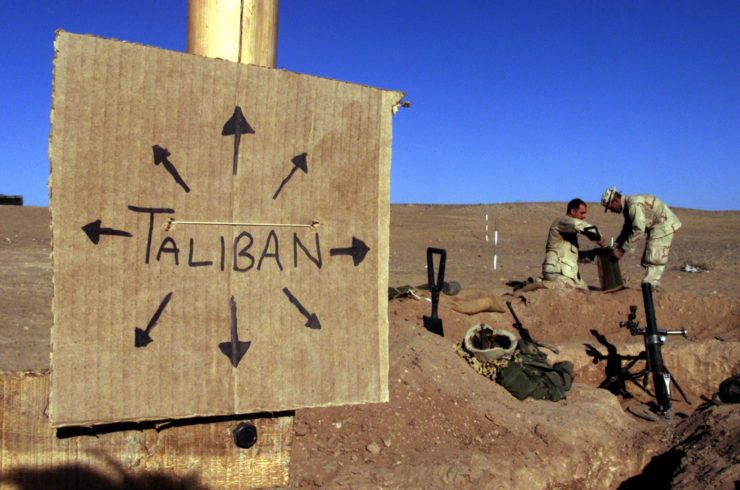
Despite the fact that Afghanistan has been left to its own devices since the withdrawal of American troops, local authorities have managed to keep the situation in the country under control. Having overcome a number of financial, organisational and humanitarian challenges, the Taliban movement is taking small steps towards creating a unique state model based on moderate Islam and Sharia law.
Where did it all start?
Almost three years have passed since the US withdrew its military contingent from Afghanistan in August 2021. Since then, the emirate, unrecognised by the international community, has begun to lead an independent life under the Taliban movement, which has come to power.
The government formed by the Taliban was in terrible disarray. The former insurgents did not know how to deal with internal and external problems. The Taliban were advocates of Islamic rule for their country, while the international community preferred them to secular standards of governance.
Despite the fears of many Western capitals and Afghans loyal to the Ghani regime, the Taliban movement began its agenda in a positive way by recognising religious freedom and declaring a general amnesty. The Taliban have also begun to tackle the legacy of a corrupt past government based on complicity with international terrorism, drug and arms trafficking. Such moves were welcomed by many professional Afghan soldiers, who were tired of the excesses and impunity of local military leaders.
Difficulties in establishing the emirate
The first serious problems began with attempts to form a government. For example, the previously overlooked non-Pashtun population of Tajiks, Uzbeks, Hazaras and other nationalities did not initially recognise the Taliban as the authority in the country. There were fears that another civil war would break out in Afghanistan. But this was avoided. Achieving an inclusive and fully representative cabinet structure remains a challenge for the authorities. However, the Taliban are taking steps in this direction. The movement’s leaders seem to have realised that in today’s global community, no nation can remain socially, politically or diplomatically excluded.
At the same time, Afghanistan was under intense external pressure on the human rights agenda and women’s access to education. The Western press actively promoted themes of the denial of basic rights and freedoms to Afghan citizens. Discrimination was portrayed mainly as a way of forcing Afghans loyal to the former regime out of the unrecognised emirate.
In the West’s view, Taliban leaders need to convince the international community that they respect human rights, especially women’s rights, as well as international law and UN policies. To this end, external actors continue to impose secularism on Kabul, which clearly does not allow for the combination of democracy and Islamic control.
What’s actually happening
Once in power, the Taliban faced a number of challenges and complexities. First and foremost was the need to redress the economic situation. With the freezing of Afghan funds abroad and the huge outflow of funds from the country, along with the fleeing loyalists of the Ghani regime, the economy of the newly formed state was objectively in a dismal state.
Under these conditions, the Afghan people remain largely dependent on humanitarian aid from international donors and the UN. At the same time, the Taliban movement, while welcoming the norms of international law, demonstratively destroys poppy fields and refuses to give up the criminal income from drug sales.
At the same time, the humanitarian situation in Afghanistan is complicated by natural disasters such as earthquakes, floods and frost. The destruction of crops and the deaths of many able-bodied people have further undermined the country’s precarious economic balance.
Despite this, the Taliban have managed to stabilise the country. They see a focus on security as the cornerstone for foreign capital and investment in the “emirate”. To this end, local authorities have sought to pursue a course of Pashtunisation of areas of the state that are weakly controlled by the centre. In general, the rotation of cadres from province to province helps to blunt interethnic conflicts and clan disputes. This strategy, according to the Taliban leadership, was intended to improve Afghanistan’s image and prove to the international community that it was capable of creating a full-fledged state governed by Sharia law.
At the same time, radical terrorist groups operating in the territory of the “Islamic Emirate” continue to play the game against all comers. The most numerous of these are the Afghan branch of ISIS “Wilāyat Khurāsān” and “Al-Qaeda”, which are exploiting the high protest potential of financially vulnerable sections of the population both in Afghanistan and Pakistan. ISIS Wilāyat Khurāsān, for example, is actively using its mobilisation resources in both countries to organise provocations in India, Central Asia and Iran. The most striking example was the recent exchange of blows between Iran and Pakistan over Islamist provocations in Balochistan.
What the future holds
Despite Western attacks, the Taliban have managed to stabilise the situation in the country. With very meagre financial resources, Afghanistan has begun to revive its economy. The stabilisation of the security situation and the suppression of the terrorist underground have made the unrecognised emirate more attractive from an investment point of view.
At the end of 2021, only Turkish and Qatari airlines were among the major economic players in Afghanistan, but Chinese companies are now present on the territory of the Islamic Emirate of Afghanistan.
In December 2023, Kazakhstan removed the Taliban movement from its list of terrorist organisations, after which business cooperation increased. Other CIS countries bordering Afghanistan to the north – Kyrgyzstan, Tajikistan and Uzbekistan – are also considering this option.
There are still many challenges ahead, including internal and external reconstruction, establishing peace throughout the country, winning the trust of the Afghan people, improving their living conditions, building relations with neighbours, fighting drugs and the illegal arms trade, and much more. But we can already say that Afghanistan is on the right track.
Bakhtiar URUSOV, political observer, especially for online magazine “New Eastern Outlook”
